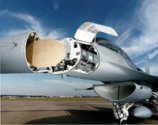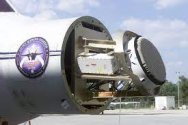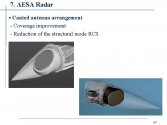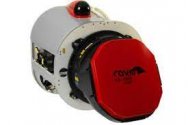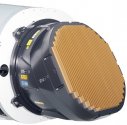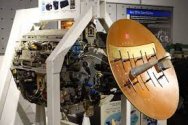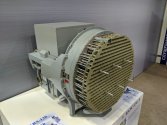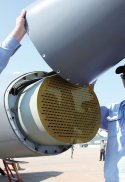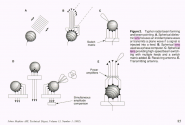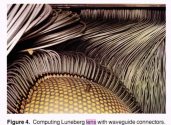Some guy claimed, "established", that the J-10B radar is a PESA because of the IFF dipoles across its face, similar to the IFF dipoles BARS has its on its face.
That's really poor reasoning. IFF dipoles across the face of an AESA affects the AESA no differently than a PESA because both are phase arrays. The two arrays differ in their internal architecture, not in their steering method, not in their transmit method and not in their receive method. I have not seen any other PESA with IFF dipoles across their face in fact, and even many slotted arrays don't have IFF dipoles across their face such as among many Western designs. The use
The reason for the IFF design is simple. The Chinese copied the IFF design from someone, implemented the system on their older radars, then passed on the IFF system to newer radars, even as their fighter radars evolved from parabolics to slotted arrays then to phase arrays. The old system is retained because they have not devised a newer and more efficient system due to the lack of money and resources, and because the system did work. We know the Chinese approach is conservative, they do not change what is not broken until they have figured out a way to make a more efficient system. Then at some point, they managed to create a more efficient IFF and the dipoles across the face are gone.
View attachment 71425
Its the same argument for the dreaded pitot tube you see on the older Flankers that are not J-16s. The pitot tube is an older system that's inherited from the older Flankers and have been there since the beginning, and the J-16 got a new airspeed measuring system. While the pitot tube has some slight interference on the radar system because its on the way, it should not matter if its an AESA, PESA, slotted array, Cassegrain or Parabolic. It should have a slight interference on the radar behind regardless of the radar's internal architecture. The composition and quality of the bandpass radome should have been a stronger factor with regards to the radar's performance, but also that too is independent of the radar's internal architecture. Whether its dark, light, green or blue, the color of the radome has no bearing on the radar's internal architecture unless the radome's color is used as an identification method for a newer jet.
Me thinks its some netizens that are over analyzing things, look hungrily for clues because of the lack of information. Things would have been better if there is some more transparency. In their overthinking things they begin to make wrong connections here and there and so on.
On the L-15, I am going to take what I said back. The slotted waveslot phase array on that picture, is likely to be BARS-130 itself. So it does use ferrite phase shiters. But the feed to the phase shifters may not be using co-ax cables but an interconnecting grid, saving space and weight. The antenna on the BARS-130 is different from the BARS used on the Su-30MKI, as you can see, it uses slotted wave guides while the MKI's BARS uses patch antennas. Somewhere along other versions of BARS were using jigsaw or sawtooth antennas.
View attachment 71426
BARS-130 is specifically designed for the Yak-130 jet trainer which is very similar to the Hongdu L-15. So this is what may be installed on the Hongdu L-15 itself. But the Hongdu L-15's radar lacked the IFF probes on the Russian version and that's because IFF systems are not shared internationally because the Russian IFF is for Russian planes and the Chinese IFF is for Chinese planes. For example, the Russian naval radars like Fregat that were sold to China have their IFF removed. So in this case, the Hongdu L-15 has a newer and different Chinese IFF. You don't see the one on the J-10B radar's either, and that's probably because the L-15 already has a newer IFF system than the one on the J-10B prototype (there is a possibility production J-10B batches may already have a newer IFF.)
View attachment 71427

